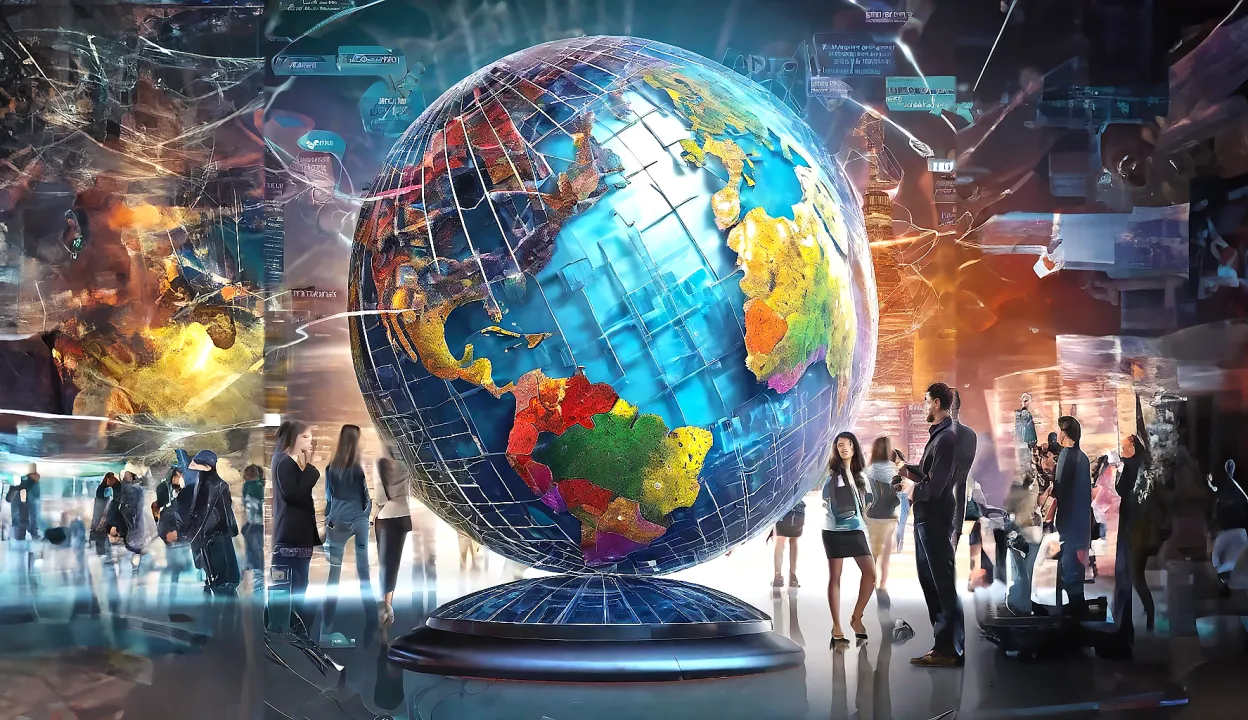The global economy and market are undergoing dynamic transformation in 2025. With shifting trade routes, evolving digital infrastructure, and inflationary pressures, every economy—from developed nations to emerging markets is reassessing its future. According to the International Monetary Fund’s (IMF) April 2025 World Economic Outlook, global GDP is expected to grow by 3.3%, a modest but promising sign following turbulent years.

As industries face supply chain disruptions, governments are tightening policies while investors remain cautiously optimistic. This blog explores the most significant global economy and market shifts 2025, unpacks current global market trends, and delivers the essential economic forecast 2025 to help you understand the next moves in the global economy and market.
The global economy 2025 is stabilizing but remains uneven. Advanced economies like the U.S., Germany, and the UK are facing slower recoveries with GDP growth averaging between 1%–2.1%, as per OECD projections. On the other hand, nations like India (6.5%) and Indonesia (5.3%) are propelling global momentum. These figures reflect the shifting centers of gravity in the global economy and market.
The IMF’s global economic outlook reveals that global inflation is expected to decline to 4.1%, down from 5.7% in 2024. However, price volatility in energy and food remains a concern, especially for import-reliant nations. Despite central banks' efforts to curb inflation through higher interest rates, the effects on consumer demand are creating ripple effects throughout the global economy and market.
Structural changes continue to reshape the global economy and market. The biggest market shifts 2025 are being driven by realignment of global trade policies, energy security strategies, and geopolitical tensions.
The U.S. has maintained its tariffs on key Chinese exports, while China has imposed export restrictions on rare earth materials. As a result, European and North American manufacturers are rethinking their sourcing models. This reconfiguration has triggered widespread supply chain disruptions, particularly in technology, automotive, and healthcare sectors.
The World Bank’s May 2025 global market update highlights a 12% increase in global logistics costs year-on-year. Ocean freight prices have also surged due to ongoing congestion at chokepoints like the Suez and Panama Canals. These rising costs are weighing down on production and delivery timelines across the global economy and market.
The international market update by Reuters indicates that companies are increasingly adopting nearshoring and dual-sourcing to mitigate risks. Latin America and Southeast Asia are emerging as preferred hubs for diversified manufacturing, offering stability in a time of uncertainty.
The global market trends in 2025 show uneven development across industries and regions. Technology, renewable energy, and infrastructure are the three key drivers.
Asia-Pacific remains a growth hotspot. According to the IMF’s world economic outlook, India, Vietnam, and the Philippines are outperforming expectations. Meanwhile, Europe faces rising interest rates and subdued export demand, while Africa is caught between economic reform and debt challenges.
These global market trends indicate that while the global economy and market remain resilient, opportunities and risks are distributed unevenly.
The IMF and World Bank jointly estimate that global trade volume will expand by 2.9% in 2025. The economic forecast 2025 also predicts:
This economic forecast 2025 suggests a cautiously optimistic future. Investment in digital infrastructure, clean technologies, and skilled labor will likely shape the coming years in the global economy and market.
At the same time, caution is warranted. The IMF’s global economic outlook warns that any escalation in geopolitical tensions or renewed health emergencies could reduce GDP by 0.5–1% globally.
With central banks prioritizing inflation control, monetary policy remains tight. The U.S. Fed and ECB are maintaining interest rates at multi-decade highs, which, although necessary, are suppressing consumer spending and business lending.
On the fiscal front, governments are walking a tightrope. Japan’s public debt stands at 261% of GDP, while the U.S. budget deficit widened to over $1.6 trillion in FY2024. These trends limit future stimulus options and could affect confidence in the global economy and market.
From an investor’s standpoint, keeping pace with the international market update and global market update releases has never been more important. Asset reallocation is favoring energy, automation, and commodities, while traditional sectors like retail and commercial real estate remain subdued.
Three years after COVID-19’s peak, supply chain disruptions remain a major concern. According to WTO data, 2025 has seen over 1,200 recorded port or logistics delays globally. The global economy and market are still heavily reliant on critical nodes—such as Taiwan for chips or the Middle East for oil—that are vulnerable to both natural and political instability.
The response has been a push toward resilient supply ecosystems. Companies are spending heavily on AI-powered inventory management, digital twins, and regional manufacturing bases. This new operational focus is an essential part of navigating the global economy and market shifts 2025.
The global economy and market in 2025 is defined by its dual narrative—recovery on one side, risk on the other. Whether you’re a policymaker, investor, or entrepreneur, being attuned to real-time global market updates, reading between the lines of the international market update, and following the world economic outlook will be crucial for making informed decisions.
As we continue through 2025, it is essential to watch:
Only with a proactive approach can one thrive amid the shifting tides of the global economy and market.